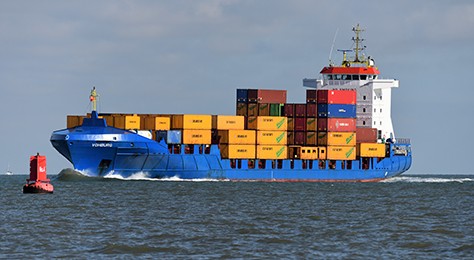
UBC to lead international research network on greening the maritime supply chain

Whether it’s particulate and greenhouse gas emissions, collisions with wildlife or the introduction of invasive aquatic species, the environmental impacts of the maritime industry often go unseen. Yet, its role as the transmission belt of the global economy is hard to ignore, with ships transporting an estimated 90 per cent of the world’s trade.
In this Q&A, we speak to Jane Lister, UBC’s Green Shipping Partnership research director. She discusses how a new international collaborative research network spearheaded by the UBC Sauder School of Business will advance knowledge and contribute policy recommendations towards more sustainable maritime practices.
Why are some shipping businesses taking it upon themselves to develop green shipping initiatives?
Ships burn bunker fuel, which is the cheapest but dirtiest fuel. Although international standards are emerging to mitigate sulphur particulate emissions, carbon emissions remain unregulated. The shipping industry is currently excluded from the Paris Agreement on climate change but nevertheless, pressure is mounting for the industry to adopt ambitious decarbonisation targets. It’s no longer a question of whether to act, but how. Leading companies recognize the risk associated with maintaining the status quo as well as the opportunities from green tech innovation and investment in zero emission vessels and supporting infrastructure.
It’s important to note that the ports – which are highly competitive businesses – are also looking at becoming greener. The Ports of L.A. and Long Beach have both promised to be emissions free by 2035, and have set the bar high for everyone else.
What is the Green Shipping Research Network, and what impact could it have on the global shipping industry?
It’s really about policy coherence and coordination, because right now actors along the shipping supply chain don’t always know what the others are doing, what the expectations are and where the boundaries of responsibilities fall. Ultimately, the network aims to advance knowledge and contribute policy recommendations towards environmental progress.
Our research will develop in phases over the next six years. First, we’ll map out what we do and don’t know about governance in shipping to date, and then address the gaps. From there, we’ll mobilize the knowledge by bringing it to industry leaders, policy makers and key players involved in the sustainable development of the maritime economy, with the aim of achieving effective policy solutions towards greener shipping.
The partnership is being funded by a six year, $2.5 million grant from the Social Sciences and Humanities Research Council (SSHRC) and involves researchers from 16 other universities, as well as 17 industry, government and NGO partners.
If efforts are already occurring to establish more sustainable shipping practices, why is the Green Shipping Initiative necessary?
While it’s true that some areas of the shipping industry are adopting efforts to go green, there are still major governance challenges. For instance, in the absence of clear international standards, policy fragmentation is occurring at regional and domestic levels, causing confusion and investment uncertainty.
Also, the fraction of global industry taking environmental initiative is small because of the commercial constraints – and for those companies already making an effort, projects for new green vessel technology lack scale. Voluntary green ship rating schemes and programs are available and offer a potentially-valuable private governance mechanism to supplement government policies, but they vary in uptake and consistency, and currently afford negligible market benefits to the companies participating. Our partnership network will be analyzing all of these issues.
Photo credit: Tom Lee/Flickr